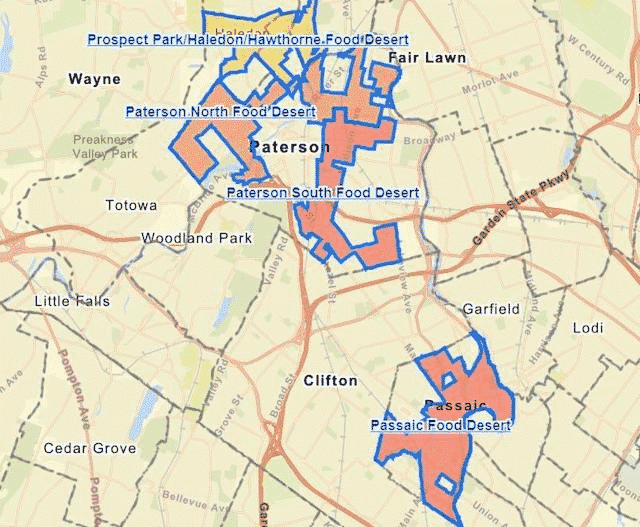The New Jersey Economic Development Authority (NJEDA) earlier this month announced that it approved the final list of New Jersey’s 50 designated “Food Desert Communities.” That list was first revealed in January 2022 and will provide up to $240 million over the next few years in funding through the Food Desert Relief Act (FDRA), part of the Garden State’s Economic Recovery Act (ERA) signed into law January 2021. That funding will be utilized to strengthen food security and combat food deserts in these communities.
The designation of “Food Desert Communities” includes consideration of factors such as food retail environment, demographics, economic indicators, and health indicators. The NJEDA developed the list and accompanying methodology for designation of the “Food Desert Communities” in partnership with the New Jersey Department of Community Affairs (NJDCA) and the New Jersey Department of Agriculture (NJDA), along with input from the New Jersey Department of Human Services (NJDHS) and New Jersey Department of Health (NJDOH).
Enrollment in nutrition assistance programs such as the Supplemental Nutrition Assistance Program (SNAP) and Special Supplemental Nutrition Program for Women, Infants, and Children (WIC) were among other factors considered in the designation of the “Food Desert Communities.” NJ SNAP served more than 900,000 New Jerseyans in 2021 and has provided more than $2 billion in extra food assistance since March 2020. NJ WIC has served more than 140,000 women and children between October 2020 and September 2021.
The FDRA initiative will provide up to $40 million per year for six years in tax credits, loans, grants, and/or technical assistance to increase access to nutritious foods and develop new approaches to alleviate food deserts. The NJEDA expects to issue regulations later this year, a critical step in the development of any Food Desert Relief Act-related programs.
“New Jersey has long been at the forefront in the fight against food insecurity,” said Lt. Governor Sheila Oliver, who serves as the commissioner of the Department of Community Affairs. “We have a moral duty to reduce food insecurity within our state’s borders and the programs we create under the Food Desert Relief Act will strengthen our ability to connect New Jerseyans in the 50 designated ‘Food Desert Communities’ with access to much-needed nutritious food.”
A January 2022 U.S. Census Bureau survey found that nearly one in 13 New Jersey households reported not having enough to eat in the prior seven days. The total population of New Jerseyans residing in “Food Desert Communities” exceeds 1.5 million individuals across a diverse range of communities in all 21 of New Jersey’s counties.
Moreover, according to recent data from the Community Food Bank of New Jersey, 800,000 New Jersey residents face hunger every day. Feeding America noted that 192,580 New Jersey children – one in 10 – face hunger. The number of individuals receiving NJ SNAP (food stamps) benefits rose more than 15 percent, from 769,331 in September 2020 to 887,467 in September 2021, according to data from the NJDHS.
“Far too often, hunger hides in plain sight. It is incumbent upon us to shine a spotlight on this all-too-prevalent issue while also bringing much-needed relief to the hundreds of thousands of New Jerseyans that are affected by food insecurity,” said Assembly Speaker Craig Coughlin “The NJEDA’s comprehensive designation of New Jersey’s ‘Food Desert Communities’ is an important step in this process.”
“Known the world over as the Garden State, New Jersey is currently home to over 10,000 farms,” said New Jersey Secretary of Agriculture (NJDA) Douglas H. Fisher, who was a former retail grocer. “We can, and must, leverage the ingenuity of our farmers and the resources made available through the Food Desert Relief Act to connect food insecure New Jerseyans with access to the fresh-grown fruits and vegetables produced at these farms. Food insecurity is an ongoing crisis and gathering public input to solidify the ‘Food Desert Communities’ designations will help connect residents facing hunger with fresh farm products grown and produced at many of New Jersey’s 10,000 farms.
In November, the NJDA announced that $10 million in American Rescue Funds were being provided to community food banks throughout the state.


